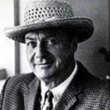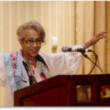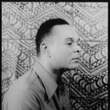Little Scarlet
Description
More Details
9780316135269
9780759511668
9780316073035
Excerpt
Similar Series From Novelist
Similar Titles From NoveList
Similar Authors From NoveList
Published Reviews
Booklist Review
Mosley returns to top form in this ninth installment of his celebrated Easy Rawlins series. In the early volumes, the calendar moved ahead almost one decade per book, but Mosley has been lingering through the 1960s--rightfully so, given the far-reaching impact of that turbulent era on African American life. Here it's the last days of the Watts riots in 1966, and a black woman, nicknamed Little Scarlet, has been found murdered in her apartment, the same building that an unidentified white man appeared to enter after escaping a mob of rioters. Did the white man commit the murder? The LAPD wants answers quickly, which is why Rawlins is asked to investigate. As has been the case throughout this series, the mystery at hand serves as a window opening on a historical moment. As Easy investigates, he finds himself forced to make sense of his own contrary feelings about the riots--his sadness at the loss of life and property in his community set against his recognition of inevitability, of the fact that the riots were expressing out in the open the anger every black man and woman had been forced to hide: Now it's said and nothing will ever be the same. That's good for us, no matter what we lost. And it could be good for white people, too. Mosley remains a master at showing his readers slices of history from the inside, from a perspective that is all those things history usually isn't: intimate, individual, and passionate. --Bill Ott Copyright 2004 Booklist
Publisher's Weekly Review
Admirably performed by reader Boatman, this audiobook the latest in Mosley's series featuring Los Angeles PI Easy Rawlins (A Red Death, etc.) picks up immediately after the Watts riots of 1965. It is a time of change, and Rawlins finds himself in the unusual position of being asked to officially help the LAPD in its search for the killer of a young black woman. Mosley is at his best capturing the gritty ambience of a setting, and Boatman's skillful reading of the author's rich, descriptive prose transports listeners to that sweltering summer, when violence and fear simmered just below the city's surface. With the support of the LAPD in his back pocket, Rawlins makes his way through places that had previously been closed, if not forbidden, to the blacks of that time. Boatman does a fine job of conveying the growing sense of confidence and strength that comes with Rawlins's newfound freedom. Tightly edited and nicely produced, this already enjoyable audiobook is further enhanced by snippets of jazz accenting the story elements at the beginning and end of each disc. Simultaneous release with the Little, Brown hardcover (Forecasts, May 24). (July) (c) Copyright PWxyz, LLC. All rights reserved
Library Journal Review
The raw treatment of blacks in America, which has simmered beneath the surface of Mosley's Easy Rawlins novels and came to a low bubble in Bad Boy Brawley Brown, here erupts to a full boil. Set during the 1965 Watts riots, the eighth book in the series finds Easy, now 45, as he is recruited by the LAPD to investigate a murder in that combat-zone neighborhood. With a letter from the deputy police commissioner giving him carte blanche, Easy semipartners with his street crew of Rawlins regulars and LAPD Detective Melvin Suggs to work both sides of the law to unearth the identity of what proves to be a serial killer. Beyond the backdrop of the riots, the question of color is intricately and masterfully woven into the fabric of the story without overwhelming the mystery. The pervading theme here is change, in both the community and the core characters, and the novel's conclusion is perhaps indicative that this installment is a turning point in the series. Mosley's hot streak continues with Little Scarlet, the best Easy novel in years. Highly recommended. [Previewed in Prepub Alert, LJ 3/15/04; see Q&A with Mosley on p. 107.]-Michael Rogers, Library Journal (c) Copyright 2010. Library Journals LLC, a wholly owned subsidiary of Media Source, Inc. No redistribution permitted.
Kirkus Book Review
Easy Rawlins sizzles as Watts burns. The official death toll in the 1966 Watts riots is 33, but the LAPD is keeping a 34th fatality quiet. The victim is red-haired Nola Payne, a.k.a. Li'l Scarlet, strangled and then shot after she rescued a white man who'd been rousted from his car by an opportunistic thief. Det. Melvin Suggs and Deputy Commissioner Gerald Jordan don't say it in so many words, but the cops who drive the streets hassling loners are scared to go door-to-door asking questions while storefronts are still smoldering. So Easy accepts a paper from Jordan authorizing him to investigate. As usual, Easy isn't much of a detective--his inquiries lead to a chain of suspicious characters who finger one another--but he could hardly be improved as a philosopher and aphorist. Recognizing early on that the official response to the riots, enlisting subservient black men into the oppressive ranks of white officialdom and cracking down on the rest, marks "the beginning of the breakup of our community," Easy, who's "never willingly said anything intelligent" to a white man, follows a trail of ill-fated souls who've sought to cross racial divides till he finds the most tortured killer of his checkered career (Six Easy Pieces, 2003, etc.). The real strength of Easy's narrative, though, is his unflinching recognition that in working with the police, he's crossing the same border that's driven his brothers and sisters to violence. Copyright ©Kirkus Reviews, used with permission.
Booklist Reviews
/*Starred Review*/ Mosley returns to top form in this ninth installment of his celebrated Easy Rawlins series. In the early volumes, the calendar moved ahead almost one decade per book, but Mosley has been lingering through the 1960s--rightfully so, given the far-reaching impact of that turbulent era on African American life. Here it's the last days of the Watts riots in 1966, and a black woman, nicknamed Little Scarlet, has been found murdered in her apartment, the same building that an unidentified white man appeared to enter after escaping a mob of rioters. Did the white man commit the murder? The LAPD wants answers quickly, which is why Rawlins is asked to investigate. As has been the case throughout this series, the mystery at hand serves as a window opening on a historical moment. As Easy investigates, he finds himself forced to make sense of his own contrary feelings about the riots--his sadness at the loss of life and property in his community set against his recognition of inevitability, of the fact that the riots were expressing out in the open the anger every black man and woman had been forced to hide: "Now it's said and nothing will ever be the same. That's good for us, no matter what we lost. And it could be good for white people, too." Mosley remains a master at showing his readers slices of history from the inside, from a perspective that is all those things history usually isn't: intimate, individual, and passionate. ((Reviewed May 1, 2004)) Copyright 2004 Booklist Reviews.
Library Journal Reviews
Easy goes after the killer who did in a red-headed woman named Little Scarlet at the height of the Watts riots. Copyright 2004 Reed Business Information.
Library Journal Reviews
The raw treatment of blacks in America, which has simmered beneath the surface of Mosley's Easy Rawlins novels and came to a low bubble in Bad Boy Brawley Brown, here erupts to a full boil. Set during the 1965 Watts riots, the eighth book in the series finds Easy, now 45, as he is recruited by the LAPD to investigate a murder in that combat-zone neighborhood. With a letter from the deputy police commissioner giving him carte blanche, Easy semipartners with his street crew of Rawlins regulars and LAPD Detective Melvin Suggs to work both sides of the law to unearth the identity of what proves to be a serial killer. Beyond the backdrop of the riots, the question of color is intricately and masterfully woven into the fabric of the story without overwhelming the mystery. The pervading theme here is change, in both the community and the core characters, and the novel's conclusion is perhaps indicative that this installment is a turning point in the series. Mosley's hot streak continues with Little Scarlet, the best Easy novel in years. Highly recommended. [Previewed in Prepub Alert, LJ 3/15/04; see Q&A with Mosley on p. 107.]-Michael Rogers, Library Journal Copyright 2004 Reed Business Information.
Library Journal Reviews
Mosley's excellent Easy Rawlins stories distill into a uniquely American package of readable goodness detective work, race relations, folksy folks, and the universal desperation and bitterness felt by a black man. Here, readers find police hire Easy, a school custodian and unlicensed PI, looking into the murder of the titular woman while the ash heaps of the 1965 Watts riots smolder. See, Scarlett (aka Nola Payne) was black, and the cops think the murderer was white. Hoo, boy, talk about a powder keg waiting to go off. Mosley is a masterful writer, especially with dialect and sketches of routine life back in 1940s to 1960s California. But this same accuracy is disturbing-can America have been this racist and ugly? It's no place I know (thankfully), but that's the appeal of the Easy Rawlins stories, an alien America as seen through the eyes of a normal dude. In some ways we're alike, like having a simple, secure job and a good home life. But that's where the similarities end. Easy can stay calm under pressure, has friends and beaucoup street smarts, dresses well, owns his own house, can take you in a fight.what's not to envy? Mostly, he's angry and sad, though, and that condition confronts readers throughout this enjoyable, engaging series.-Douglas Lord, Connecticut State Lib., Middletown Copyright 2010 Reed Business Information.
Publishers Weekly Reviews
Set during the Watts riots of 1965, this eighth entry in Mosley's acclaimed Easy Rawlins series (Bad Boy Brawly Brown, etc.) demonstrates the reach and power of the genre, combining a deeply involving mystery with vigorous characterizations and probing commentary about race relations in America. Easy Rawlins, 45, is-like the rest of black L.A.-angry: "the angry voice in my heart that urged me to go out and fight after all the hangings I had seen, after all of the times I had been called nigger and all of the doors that had been slammed in my face." But Easy stays out of the fiery streets until a white cop and his bosses recruit him to identify the murderer of a young black woman, Nola Payne; the cops suspect an unidentified white man whom Nola sheltered during the riots, and are worried that if they pursue the case, word will leak and the riots will escalate. Easy, an unlicensed PI who also works as a school custodian, agrees to investigate, drawing into his quest several series regulars, including the stone killer Mouse, the magical healer Mama Jo and his own family. There's also a sexy young woman whose allure, like that of the violent streets, threatens to smash the life of integrity he has so carefully built. In time, Easy focuses on a homeless black man as the killer, not only of Nola but of perhaps 20 other black women, all of whom had hooked up with white men. This is Mosley's best novel to date: the plot is streamlined and the language simple yet strong, allowing the serpentine story line to support Easy's amazingly complex character and hypnotic narration as Mosley plunges us into his world and, by extension, the world of all blacks in white-run America. Fierce, provocative, expertly entertaining, this is genre writing at its finest. (July 5) Forecast: Strong reviews, Mosley's rep and word of mouth will get this title onto lists quickly; a 30-city author tour will add lift. Expect this to be Mosley's biggest seller yet. Copyright 2004 Reed Business Information.





















































